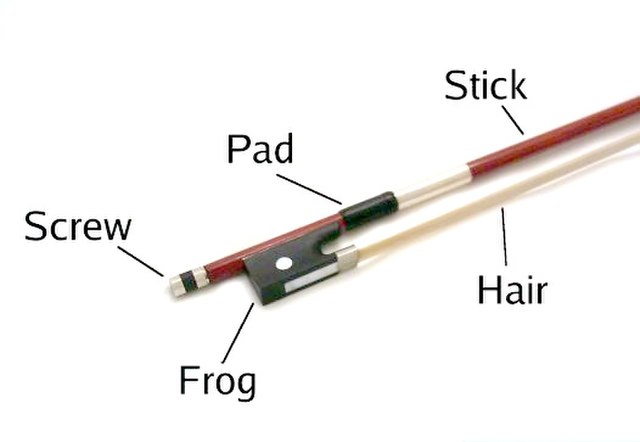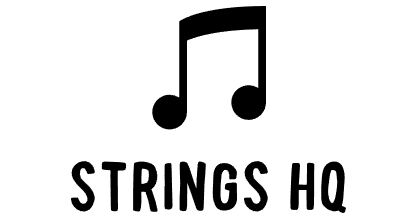The violin requires special grip techniques while using the bow to perform, unlike some other stringed instruments such as the guitar.
Many individuals, however, believe that the more expensive a bow is, the better it’s. Although a costly bow has numerous advantages, this isn’t always the case.
In this article, we’ll explore the differences between cheap and expensive violin bows.
Summary
The price of a bow is usually determined by the materials used to make it and the quality of manufacturing. A cheap bow will sound far worse than expensive bows and Violinists will certainly notice the difference. Cheap bows are less versatile and scratchy, whereas expensive bows are well balanced and project the sound of the Violin.
Table of Contents
Do Bows Really Affect the Sound Quality of Violins?
Because the bow is responsible for up to half of the audio you produce, getting the best quality bow you can is in your best interests. Many things can affect the sound quality of the violin.
The sound can be affected by the bow’s tension. A firm bow will make you uneasy and will feel difficult to handle. The sound will be stiffer and harsher. When you try to play with a bow that is overly loose, it will sway.
A bow that is overly soft will not offer the clarity needed to highlight expressions and skill. So you want it to be perfect tension.
The tension of a bow is also affected by its design. The majority of bows are spherical, making them more sensitive and flexible. A round bow is often firmer than an octagonal bow.
A bow with the right degree of stiffness can generate a deep, clear tone while still feeling gentle in the grip.
It’s also important to consider the weight. While a heavier bow may feel safe when used in long bow strokes, it will be harder to utilize in some techniques. A lighter bow might be enjoyable to use, but it can also feel strange to the player.
What Makes a Violin Bow Expensive?
The price of a violin bow is determined by its weight, shape, size, balance, and materials used. The quality of the wood, as well as the type of hair used to manufacture the bow, make the violin bow more valuable.
Violin bows can range drastically in price from around $30 to over $10,000.

Materials
The materials of the bow can make or break the quality of the bow. They’re possibly the most important aspects to consider while choosing a bow.
Stick
The stick can be made out of a variety of woods. Pernambuco is one of the highest-grade woods available. However, other non-wood materials, such as carbon fiber, are also used.
Pernambuco
Pernambuco is known for manufacturing the most responsive bows, making it the most famous type of wood used for violin bows.
Pernambuco is a rare Brazilian wood that is highly regarded for its elasticity and durability. It’s made of the hardwood of the tree. As a result, it’s one of the expensive woods that are used for bows.
A Pernambuco bow has the flexibility to respond to the player considerably more efficiently than other types of wood. Also, it’s sturdy enough to withstand a long time in heavy use.
The fact that Pernambuco is denser than other types of wood used for bows is one of the reasons it’s so popular among violinists. It’s also more sensitive to the violin’s vibrations.
There are low-cost Pernambuco bows on the market that are fashioned from the tree’s sapwood, which is lower quality than heartwood. So if you want premium Pernambuco wood, make sure it’s made of heartwood.
Carbon Fiber
Synthetic materials are used to make carbon fiber bows instead of wood. To make the bow, hair-like fibers are combined and molded together, resulting in a flexible, light, and sturdy bow.
Carbon fibers have numerous advantages. It won’t expand or contract in response to changes in weather. A composite bow will not be affected by humidity in the same way as a wood bow would. They’re also highly sturdy and less prone to break or crack at the tip.
Hair
Strands of horsehair are used to make the bow hair. Between 160 and 180 hairs are used in a single violin bow. These hairs are arranged in a ribbon by being linked to each other. To achieve the white hue, they normally bleach the hair.
Horsehair contains moisture quickly, which can have a significant impact on your bow. Hair can react in a variety of ways depending on the weather and humidity. As a result, having high-quality hair is always crucial.
Horsehair comes in a variety of types. Siberian and Mongolian horsehair is often regarded as the best. The horse’s gender plays a part in picking the hair as stallion hair is favored over female horses’ hair as it’s cleaner.
Balance
The performer can never hope to be totally in charge of what they’re playing using an ill-balanced bow. An uneven bow will cause the performer to create a way to make up for the bow’s lack of weighting. Alternatively, they will be forced to learn the techniques incorrectly.
Shape
The majority of bows on the market, and nearly any bow that is cheap, will feature a rounded design. The tension is influenced by the design. On rare occasions, a top-quality bow supplier will sell the octagonal design.
Octagonal designs are more responsive and adaptable than other shapes. A rounded bow is usually tougher than an octagonal bow. However, because it’s a matter of personal preference, it’s normally up to the player to decide which design they prefer.
Do Expensive Violin Bows Produce a Better Sound Than Cheap Violin Bows?
Very cheap Violin bows sound far worse than good quality expensive bows. The player will also noticeably feel the difference, and versatility would be severely limited by a poor-quality bow. However, if you’re a newbie, you don’t need an obscenely expensive bow; instead, choose one with decent sound quality and with which you can comfortably perform techniques.
Bows have an impact on sound quality, but they also have an impact on technique. For example, it could be harder for you to play using the spiccato technique. A cheap bow could be flimsy and poorly balanced, resulting in the player needing to work harder to produce a clear sound.
Around 30% of the quality of sound can be influenced by the bow.
With a cheap bow, certain things become more difficult. Cheap bows can perform actions without your control as they’re often more difficult to handle.
A very cheap bow may be so poorly made that hair would shed whilst playing, and the bow may not even be straight. The stick may not be made of solid wood and this would impact how much the note resonates on the Violin. You may struggle to fill a room with sound using a cheap bow.
A good bow is evenly balanced, has a proper weight distribution, and responds cleanly and smoothly. This enables it to produce better sounds. It will be heavier, stable, dependable, and will aid in projecting the Violins sound. The flexibility of the wood will also be on point and will react to the player’s intentions and the music.
Are Expensive Violin Bows Worth It?
If you’re an advanced violinist, expensive violin bows are worthwhile. An expensive bow will offer versatility and sound quality that a cheap bow wouldn’t. You will also be able to re-hair expensive bows meaning they will last longer, whereas this isn’t always the case with cheaper bows.
If you’re just getting started, however, a less expensive bow may be better. It’s easier to play with higher-quality bows as they’re typically quick to respond.
The ideal set-up is one of the most important factors. You’ll be able to exercise for longer durations if you have a decent bow and violin. A higher-end bow will last longer and be more sturdily constructed.
Does a Beginner Need an Expensive Violin Bow?
It’s not needed to buy a costly bow for a student or a beginner performer. Premium and excellent violin bows can cost a fortune, but they have features that a beginner violinist doesn’t require yet. So it would be best to opt for a cheaper bow.
For a student, a strong and durable bow that is also balanced, and has a decent curve in the wood is sufficient enough.
The majority of low-cost violin bows are made of brazilwood, a durable hardwood imported from Brazil. The price of these bows can range from as cheap as $50 to as expensive as $300. There are other options as well.
Fiberglass bows are a cheaper alternative and can be bought for as little as $42. These bows are not as good as high-end bows, but they’re more robust and less likely to shatter or distort. We would only recommend these bows for absolute beginners as you’ll likely outgrow a fiberglass bow within the first year or two of playing the Violin.
Carbon graphite violin bows are also available, however, they’re generally more expensive than fiberglass bows.
Are Older Violin Bows More Expensive?
Older bows, as well as violins, are typically more expensive. This is according to the type of wood and its quality. The rarity also contributes significantly.
A violin and its bow aren’t more expensive simply because they’re considered antiques. However, if they have lasted for a long time, it usually signifies that they’re of very high-quality materials.
The beautiful sound of the violin is determined by the instrument’s wood and craftsmanship. When an outstanding older violin is combined with a wonderful old bow, the result is a stunning sound and makes it a highly valued instrument.
What Is The Best Cheap Violin Bow?
The DZ Strad model 600 is a very high-quality, affordable violin bow. It’s made of strong and high-end Pernambuco. It has genuine Mongolian grade AAAA horsehair.
The bow is well-balanced and responds smoothly. This bow is ideal for beginners and students and will offer far more versatility than a cheap and cheerful fiberglass bow.
What is The Best Expensive Violin Bow?
A high-end premium violin bow doesn’t have to cost thousands of dollars. The DZ Strad PECCATTE is a fantastic replica of PECCATTEE’s masterful design. A Peccattee bow recently sold for over $200k at auction.
The bow is silver-lined and made of extremely high-quality dense Pernambuco. This results in a very versatile and responsive bow, perfect for intermediate to advanced performers. The build overall quality is exquisite – AAA Mongolian Horse Hair is used, lizard skin leather for the thumb grip, and a pearl inlay for the frog.
Wrap Up
When it comes to playing the violin, the quality of the bow makes all the difference. More expensive bows have a better response, are more robust, and are more comfortable. All of this is due to their materials.
A low-cost bow may have these features as well but at a reduced cost. However, keep a watch out for poor-quality materials, as they might cause the tone to sound scratchy rather than smooth.
If you’re a newbie, it’s better to start with a low-cost bow. And once you’re a professional musician, you can always upgrade.
